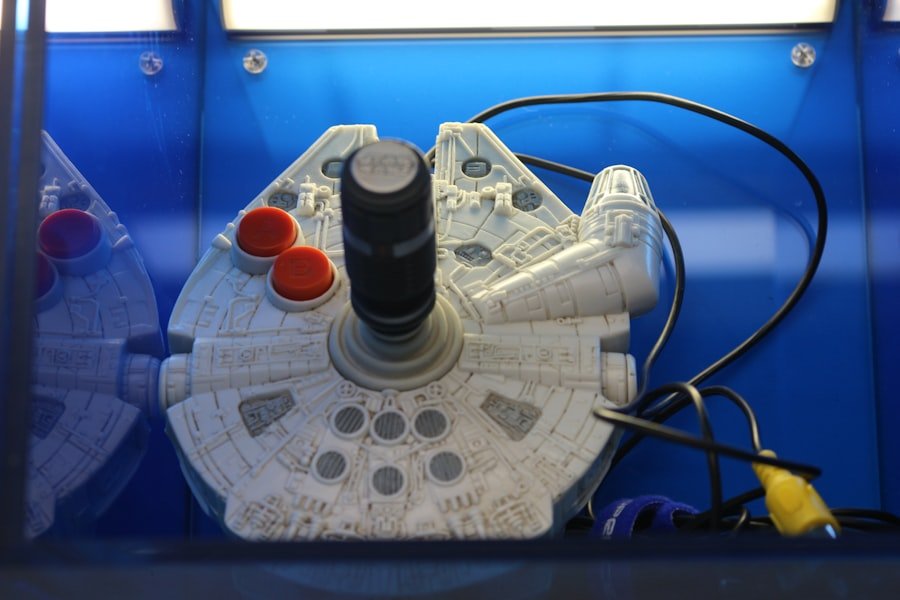Now Reading: Adapting to Speedrunning: How Developers Respond
-
01
Adapting to Speedrunning: How Developers Respond
Adapting to Speedrunning: How Developers Respond

As I delve into the world of speedrunning, I find myself captivated by a vibrant community that thrives on competition, creativity, and camaraderie. Speedrunning, at its core, is the art of completing a video game as quickly as possible, often utilizing a variety of techniques and strategies to shave off precious seconds. This community is not just about racing against the clock; it’s a gathering of passionate gamers who share a common goal: to master their favorite titles and push the boundaries of what is possible within those games.
I’ve come to appreciate the diverse backgrounds of speedrunners, ranging from casual gamers to highly skilled professionals, all united by their love for gaming and the thrill of competition. The speedrunning community is also characterized by its unique culture and language. As I immerse myself in forums, Twitch streams, and YouTube videos, I encounter a rich tapestry of terminology and references that are specific to this subculture.
Terms like “Any%,” “Glitchless,” and “New Game+” become part of my vocabulary as I learn the nuances of different categories and rulesets. The sense of belonging I feel when engaging with fellow speedrunners is palpable; we share tips, celebrate achievements, and even commiserate over failed attempts. This community fosters an environment where knowledge is freely exchanged, and I find myself inspired by the dedication and creativity of others as they tackle challenges in ways I never thought possible.
Key Takeaways
- The speedrunning community is a dedicated group of gamers who aim to complete games in the fastest time possible.
- Embracing glitches and exploits is a common practice in speedrunning, as it adds an extra layer of challenge and creativity to the gameplay.
- Balancing game difficulty is crucial for speedrunning, as it can make or break the experience for speedrunners.
- Adding speedrunning features such as timers and leaderboards can enhance the overall experience for both speedrunners and casual players.
- Patching speedrunning exploits should be done carefully to avoid alienating the speedrunning community and their unique playstyle.
Embracing Glitches and Exploits
One of the most fascinating aspects of speedrunning is the embrace of glitches and exploits that can drastically alter gameplay. As I explore various games, I discover that these unintended features can be leveraged to achieve remarkable feats. For instance, in some titles, players can clip through walls or skip entire sections of a level, allowing them to complete the game in record time.
This acceptance of glitches as legitimate tools in the speedrunning arsenal is something that sets this community apart from traditional gaming experiences. I find it exhilarating to watch skilled runners execute these techniques with precision, transforming what might be seen as a flaw into a strategic advantage. However, this reliance on glitches also raises interesting questions about game design and player intent.
As I engage in discussions with other speedrunners, I realize that there is a fine line between exploiting a glitch and breaking the game entirely. Some purists advocate for “glitchless” runs, where players must complete the game without any exploits, while others revel in the creativity that glitches allow. This dichotomy fuels passionate debates within the community, and I find myself drawn to both sides of the argument.
Ultimately, embracing glitches adds an extra layer of excitement to speedrunning, as it challenges me to think outside the box and approach games from a new perspective.
Balancing Game Difficulty for Speedrunning

As I reflect on my experiences with speedrunning, I recognize the importance of balancing game difficulty to create an engaging experience for both runners and casual players. Developers face a unique challenge: they must design games that are enjoyable for those who wish to explore every nook and cranny while also accommodating those who want to race through at breakneck speed. In my own journey as a speedrunner, I’ve encountered titles that strike this balance beautifully, offering multiple difficulty settings or modes that cater to different playstyles.
When a game is too easy, it can diminish the thrill of speedrunning; conversely, if it’s too difficult, it can frustrate players and deter them from attempting a run. I’ve found that games with well-placed checkpoints, forgiving mechanics, and intuitive controls tend to foster a more enjoyable speedrunning experience. Developers who understand this balance can create environments where both casual players and speedrunners can thrive.
As I continue to explore various titles, I appreciate those that thoughtfully consider how their design choices impact the speedrunning community.
Adding Speedrunning Features
In my exploration of speedrunning, I’ve come to appreciate how certain features can enhance the experience for both runners and spectators alike. Many modern games are beginning to incorporate specific elements designed with speedrunners in mind. For instance, built-in timers allow players to track their progress in real-time, providing immediate feedback on their performance.
This feature not only helps me gauge my skills but also adds an element of excitement as I strive to beat my previous times. Additionally, developers are increasingly recognizing the value of providing tools that facilitate speedrunning. Features such as level select options or practice modes enable me to hone my skills on specific sections of a game without having to replay it from the beginning.
These thoughtful additions demonstrate an understanding of the speedrunning community’s needs and desires. As I witness more games embracing these features, I feel encouraged by the potential for future titles to cater even more effectively to our unique playstyle.
Providing Leaderboards and Timers
The thrill of competition is a driving force behind my passion for speedrunning, and leaderboards play a crucial role in fostering that competitive spirit. As I navigate various games, I often find myself drawn to online leaderboards that showcase the fastest times achieved by players around the world. These rankings not only motivate me to improve my own skills but also create a sense of community as I connect with others who share my passion for racing against the clock.
Timers are another essential component of the speedrunning experience. They serve as both a tool for tracking progress and a source of motivation. When I see my time ticking down during a run, it ignites a sense of urgency that pushes me to perform at my best.
Many games now feature integrated timers that allow me to monitor my performance seamlessly while playing. This integration enhances my overall experience and reinforces the competitive nature of speedrunning.
Patching Speedrunning Exploits

As much as I enjoy embracing glitches and exploits in speedrunning, I also recognize the challenges they pose for developers striving to maintain game integrity. When a game becomes too reliant on specific exploits for speedruns, it can lead to frustration among players who want a fair challenge. In my own experiences, I’ve seen how developers respond to this dilemma by patching certain exploits or glitches that disrupt gameplay balance.
While some may view these patches as detrimental to the speedrunning community, I understand that they are often necessary for preserving the overall experience of the game. Developers must strike a delicate balance between maintaining player engagement and ensuring that their games remain challenging yet fair. As I witness patches being implemented, I find myself reflecting on how they impact not only my own runs but also the broader community’s perception of what constitutes legitimate gameplay.
Engaging with Speedrunning Events
Participating in speedrunning events has been one of the most rewarding experiences in my gaming journey. Events like Games Done Quick (GDQ) bring together runners from around the world for charity marathons that showcase incredible talent while raising funds for important causes. As I watch these events unfold, I’m continually amazed by the dedication and skill displayed by participants who push themselves to achieve new records live on stage.
Engaging with these events has deepened my appreciation for the speedrunning community as a whole. The atmosphere is electric; runners share their strategies and techniques while interacting with viewers in real-time. It’s inspiring to see how passionate individuals come together for a common purpose—raising money for charity while celebrating their love for gaming.
These events have not only provided me with entertainment but have also fostered connections with fellow gamers who share my enthusiasm for speedrunning.
Incorporating Speedrun Modes
As I explore various games, I’ve noticed an increasing trend toward incorporating dedicated speedrun modes within titles themselves. These modes often come equipped with unique features designed specifically for speedrunners, such as built-in timers, leaderboards, and even special challenges tailored for those looking to test their skills against others. This thoughtful integration has made it easier for me to engage with speedrunning without needing extensive knowledge about glitches or exploits.
Having access to these dedicated modes allows me to focus on honing my skills while enjoying the game in its intended form. It creates an environment where both casual players and seasoned speedrunners can coexist harmoniously. As more developers recognize the value of incorporating speedrun modes into their games, I’m excited about the potential for future titles to further enhance this aspect of gameplay.
Supporting Speedrunning Charity Events
One of the most heartwarming aspects of the speedrunning community is its commitment to charitable causes. Events like Games Done Quick have shown me how powerful gaming can be when combined with philanthropy. Watching skilled runners complete challenging games while raising money for organizations like Doctors Without Borders or Prevent Cancer Foundation fills me with admiration for both their talent and their dedication to making a difference in the world.
Participating in these charity events has allowed me to contribute in my own way—whether through donations or simply spreading awareness among friends and family about upcoming marathons. The sense of unity within the community during these events is palpable; we come together not just as gamers but as individuals striving to create positive change through our shared passion for speedrunning.
Recognizing Speedrunning Achievements
As I immerse myself deeper into the world of speedrunning, I’ve come to appreciate how important it is to recognize achievements within this community. Whether it’s breaking personal records or setting new world records, celebrating milestones fosters motivation among runners like myself. Platforms such as Twitch and YouTube have become essential spaces where we can showcase our accomplishments while connecting with others who share our passion.
Recognition goes beyond just personal achievements; it extends to acknowledging contributions made by fellow runners who have pushed boundaries within specific games or categories. By celebrating these accomplishments collectively, we strengthen our community bonds while inspiring one another to reach new heights in our own journeys as speedrunners.
Collaborating with Speedrunning Communities
Collaboration within the speedrunning community has been one of the most enriching aspects of my journey as a gamer. Engaging with fellow runners allows me not only to learn new techniques but also to share insights about different games and strategies that can enhance our collective experience. Whether through online forums or local meetups, I’ve found that collaboration fosters an environment where knowledge flows freely among participants.
Working together on projects such as creating guides or organizing events has deepened my appreciation for this community’s spirit of cooperation. By pooling our resources and expertise, we can elevate each other’s skills while promoting growth within our respective gaming circles. As I continue to collaborate with others in this vibrant community, I’m excited about what we can achieve together—pushing boundaries further than ever before while celebrating our shared love for speedrunning.
In conclusion, my journey through the world of speedrunning has been nothing short of transformative. From understanding the intricacies of this passionate community to embracing glitches and collaborating with fellow gamers, every aspect has enriched my experience as both a player and an enthusiast. As I look ahead at what lies beyond—new games waiting to be conquered and fresh challenges beckoning—I am filled with anticipation for all that awaits me in this exhilarating realm where skill meets creativity at lightning speed.
In a recent article on how to create viral gaming content, successful creators share their insights on engaging with audiences and creating content that resonates with viewers. This article provides valuable tips and strategies that developers can use to enhance their engagement with the speedrunning community and create content that appeals to this niche audience. By incorporating these lessons into their approach, developers can better respond to the growing influence of speedrunning culture in the gaming industry.



























